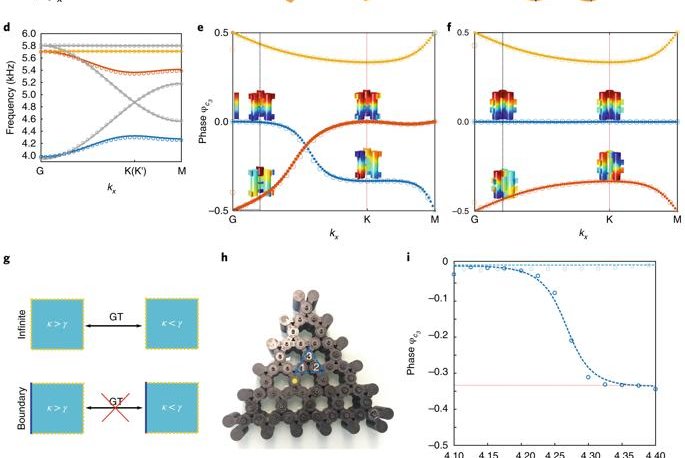Diagrams showcase the development of the concepts behind the new metamaterial. Photo by Xiang Ni, et al./Nature Materials
Jan. 2 (UPI) -- Researchers have developed a new metamaterial with a robust acoustic structure. The novel material transports sound along its edges and concentrates it at its corners.
Material scientists at the City University of New York and at the City College of New York designed the metamaterial with the help of a mathematical field called topology. Topology is the study of objects unaffected by continuous deformations.
A straw and a donut, for example, both having a single hole, are topologically equivalent. Both objects could be contorted to form the other other without adding new holes.
The principals of topology first inspired the team of material scientists to design materials that only carry electric currents along their edges. According to scientists, the topological nature of their band gap makes these materials' conductivity resistant to disruption by noise or imperfection.
"There has been a lot of interest in trying to extend these ideas from electric currents to other types of signal transport, in particular to the fields of topological photonics and topological acoustics," Andrea Alù, director of the Photonics Initiative at City University's Advanced Science Research Center, said in a news release. "What we are doing is building special acoustic materials that can guide and localize sound in very unusual ways."
To build their new metamaterial, Alù and his research partners used a 3D printer to create a series of tiny trimers, a ring formed by three acoustic resonators. Scientists affixed the trimers to form a triangular lattice.
The symmetry of the trimers and chiral symmetry of the larger lattice structure yielded robust acoustic properties derived from the topology of the metamaterial's acoustic bandgap.
When sound is played at frequencies outside the band gap, the sound is made to travel through the bulk of the metamaterial, but when frequencies within the band gap are played, the sound moves along the edges to the metamaterial's corners.
The metamaterial's unique acoustic properties aren't disrupted by imperfections.
"You could completely remove a corner, and whatever is left will form the lattice's new corner, and it will still work in a similar way, because of the robustness of these properties," Alù said.
Researchers described their feat in the journal Nature Materials, and are now trying to build upon their latest findings by constructing more complex metamaterials with unique acoustic qualities.
"We're showing, fundamentally, that it is possible to enable new forms of sound transport that are much more robust than what we are used to," Alù said. "These findings may find applications in ultrasound imaging, underwater acoustics and sonar technology."















